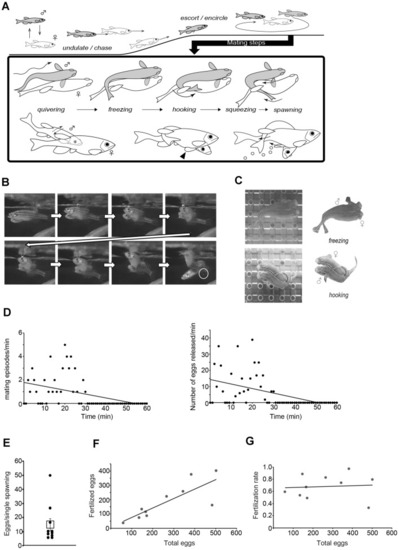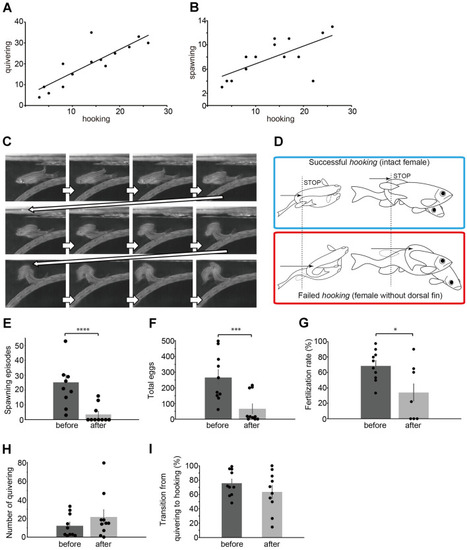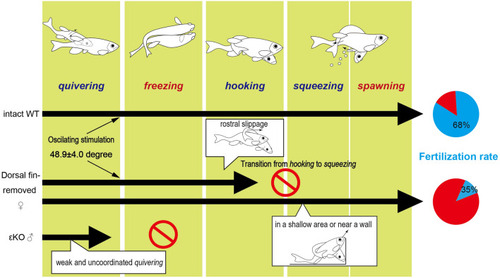- Title
-
High-speed camera recordings uncover previously unidentified elements of zebrafish mating behaviors integral to successful fertilization
- Authors
- Zempo, B., Tanaka, N., Daikoku, E., Ono, F.
- Source
- Full text @ Sci. Rep.
|
Analyses of mating process in intact WT zebrafish pairs. ( |
|
Functional significance of |
|
Analyses of |
|
Summary. Mating of a typical zebrafish pair (intact, WT; Fig. |




